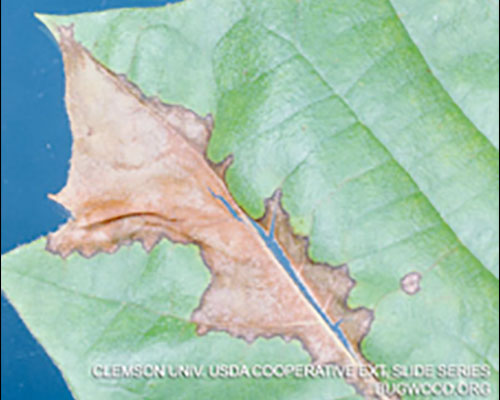
Melinda’s Garden Moments is heard Mon.-Fri. at 7:45 and 10:45 a.m. and 4:45 p.m. on WHAV.
Irregular shaped brown spots on the leaves of maple, ash, oak and sycamore trees could mean your tree has anthracnose. This disease is caused by several different fungi and is common in years with cool wet springs.
Anthracnose usually infects younger growth and can be more prevalent on the lower leaves. The leaf spots usually occur along the veins. Severely infected leaves may even curl and fall off.
Fortunately, this disease is usually not harmful to healthy mature trees. Sycamores are the exception since twig and branch dieback can occur. Avoid the problem by growing resistant Sycamore varieties like ‘Bloodgood’, ‘Columbia’ ‘Liberty’ or the London plane tree (Platanus x acerifolia).
Reduce the risk of disease next season by raking and destroying fallen leaves. Bury or burn, if your municipality allows, infected leaves. Only compost infected leaves if your compost pile reaches 140 degrees.
A bit more information: Several other diseases can cause leaf spot on trees. Oak wilt usually occurs at the top of the tree. The leaves turn pale and brown from the leaf edges in. Verticillium wilt can infect maples, ashes and other trees, shrubs and vegetables. The damage usually starts as wilting on a few upper branches. The leaves then turn pale and eventually dry.
For more gardening tips, how-to videos, podcasts and more, visit www.melindamyers.com.

